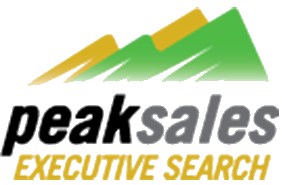We must keep our best-performing sales professionals growing and engaged in your sales organization. Successful salespeople contribute practical value to their employers. They also know that they could work for other companies. They are at heightened risk of leaving. You may never know if your salespeople have reached their full potential.
Keeping your star salespeople engaged and growing takes multiple strategies and creative leadership. In particular, crafting a sales career path for your department is vital. Use these steps to build a career progression adapted to your department and staff’s specific needs.
Step 1: Evaluate Your Sales Team
Your sales career progression opportunities must be grounded in your department’s realities. Start by looking at the patterns in your sales team using the following reflection questions.
- What is the turnover pattern in the sales team? Where are my salespeople going (i.e., to other positions in the company or leaving the company entirely)? Are turnover rates increasing over time?
- What roadblocks and obstacles do your salespeople regularly mention?
- Does your sales team have any potential up-and-coming leaders?
- How is your sales team balanced between new vs. experienced salespeople?
- What are the different sales positions your team has (i.e., are there specialists by market, different levels of sales representatives?)
In addition to the questions above, take a few minutes to review the annual goals documents your salespeople have completed. In particular, look for indicators that your people are seeking growth opportunities (e.g., increased interest in leadership opportunities, explicit interest in promotion). Further, look for people excelling in specific sales areas like retaining customers, prospecting, or working with specific types of customers.
Step 2: Identify The Top Talent To Retain With Growth Opportunities
The next step is to make a list of your best performers. Start by looking at sales performance measures like sales productivity and quota attainment. Next, look for leadership potential, such as evidence of your people supporting new highers or supporting corporate initiatives.
Keep this list in mind as you transform your sales team with a new career path. Organizational change can frustrate people and trigger anxiety. Take extra time and attention to ensure that your top performers feel appreciated and valued as the sales department changes.
Step 3: Build Out Your Sales Career Path With New Sales Positions
Now, it’s time to get creative to build new sales positions. Don’t worry – there’s no need to create and fill these positions immediately. We recommend taking a gradual approach to add these positions over months or several quarters. There are a few factors to remember when adding new sales positions: breadth, depth, and leadership.
Breadth of Sales Positions
Breadth in sales means looking at the sales process and customer journey. Many sales processes start with prospecting. The next step is meeting with the prospect and developing a proposal or quote. The final step is customer success or service fulfillment.
Depth of Sales Positions
Depth in sales positions means taking a single position (e.g., account executive) and breaking it into incremental positions. For example, an entry-level account executive position might focus on the small and medium-sized business segment, while the senior account executive position focuses on larger opportunities.
Leadership
The third dimension to consider in building out your sales career path is to look at adding leadership opportunities. For example, what is next on the career leader for a successful account executive with 5-10 years of experience? They might be interested in a promotion to a sales manager role.
Step 4: Enhance Sales Compensation And Flexibility
Adding new job titles needs to come with meaningful increases in responsibility, compensation, and impact. Likewise, offering flexibility, like the option to work remotely, is critical to retain talent. Use these self-assessment questions to validate the competitiveness of your compensation and flexibility.
- When was the last time our sales compensation was reviewed and compared to industry benchmarks?
If it has been more than 12 months since you last reviewed sales compensation in detail, it is time to perform another review. Unusually high inflation means reviewing compensation more often is essential.
- What can we do to improve variable and bonus compensation?
Look for ways to add more rewards to your best salespeople, including more significant bonuses and equity. If increasing the dollar value of compensation is off the table, there’s another option. Look for ways to simplify the compensation formula and create a user-friendly compensation calculator for your staff. When it’s easy for salespeople to see how much they can earn to the dollar, working to close one more deal gets more appealing.
- Do we have the right technology to support today’s remote and hybrid work expectations?
Your salespeople should never need to struggle to make calls or look good on video calls. Ask your sales employees if they have everything they need, like quality headsets, cameras, and related tools.
Step 5: Launch Your Sales Career Path With Promotions
Up to this stage, the sales leader has spent most of their time building out the sales career path. In this step, it is time to bring it to life. We recommend starting by promoting your top performers for two reasons. First, offering promotions to your best performers is an excellent way to retain them. Second, launching your new sales career path with promotions signals that your transformation initiative will bring new opportunities.
Step 6: Complete The Sales Team Build Out With Expert Support
After promoting a few key staff to new positions, you’ll see an urgent need to keep building out your sales organization. You may need to hire more junior staff, like sales development representatives. Or you may need experienced staff or even sales leaders to guide the department’s growth further.
Contact Peak Sales Executive Search to support the build-out of your sales organization.

